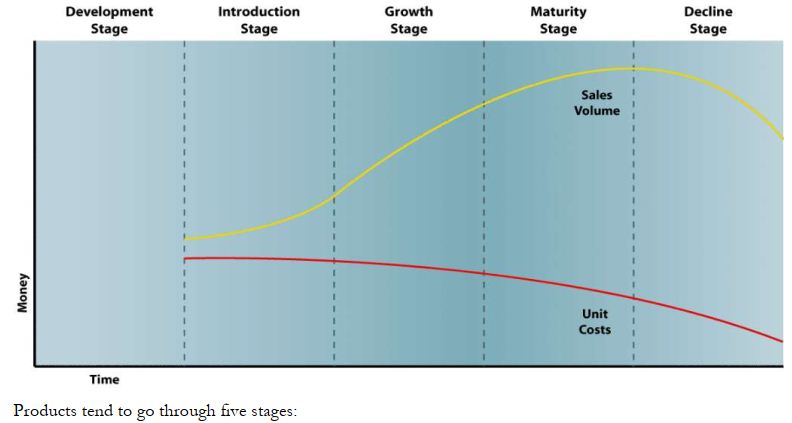In order to enhance the chances of a new product succeeding, the company should follow a systematic new product development process.
Highlight the major stages in new product development
New product development stage
*very expensive
*no sales revenue
*losses
Market introduction stage
*cost high
*sales volume low
*losses
*high prices
Growth stage
*costs reduced due to economies of scale
*sales volume increases significantly
*profitability
*prices to maximize market share
Mature stage
*costs are very low
*sales volume peaks
*prices tend to drop due to the proliferation of competing products
*very profitable
Decline stage
*sales decline
*prices drop (lower prices may lead to lower value perception)
*profits decline
The management of the product life cycle
The progression of a product through these stages is no means certain. Some products seem to stay in the mature stage forever (e.g., milk). Marketers have various techniques designed to prevent the process of falling into the decline stage. In most cases however, one can estimate the life expectancy of a product category.
Marketers’ marketing mix strategies change as their products goes through their life cycles. Advertising, for example, should be informative in the introduction stage, persuasive in the growth and maturity stages, and be reminder-oriented in the decline stage. Promotional budgets tend to be highest in the early stages, and gradually taper off as the product matures and declines. Pricing, distribution, and product characteristics also tend to change.
Customers respond to new products in different ways. Diffusion of innovations theory, pioneered Everett Rogers, and other diffusion models posits that people have different levels of readiness for adopting new innovations and that the characteristics of a product affect overall adoption.
Microsoft has released publicly the dates at which its various products will be discontinued or unsupported, even before they are released.

